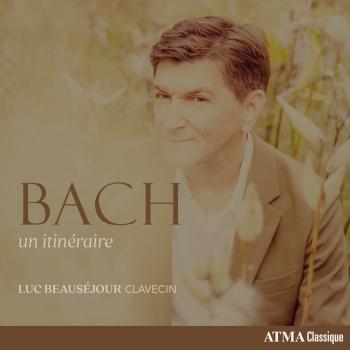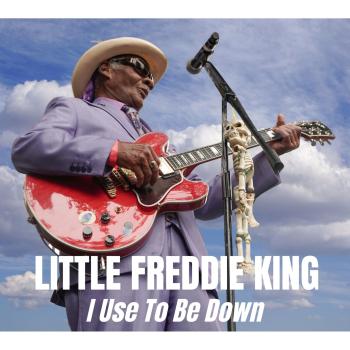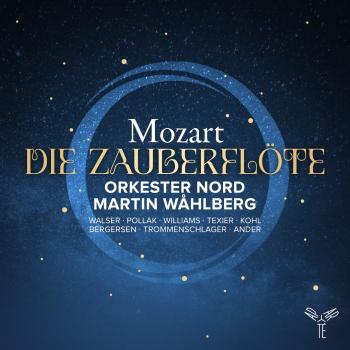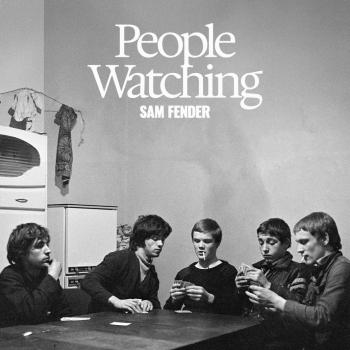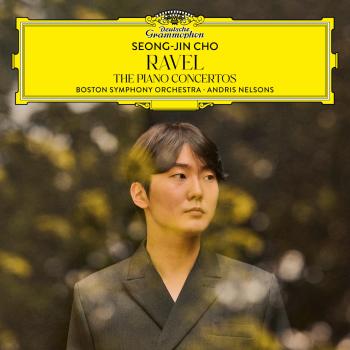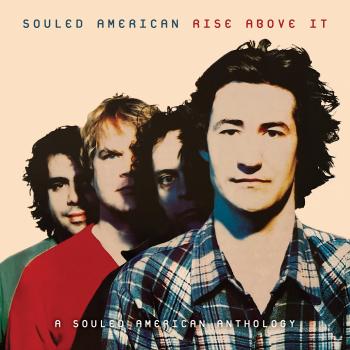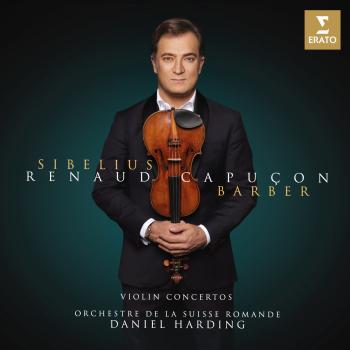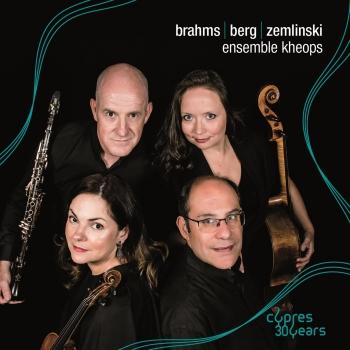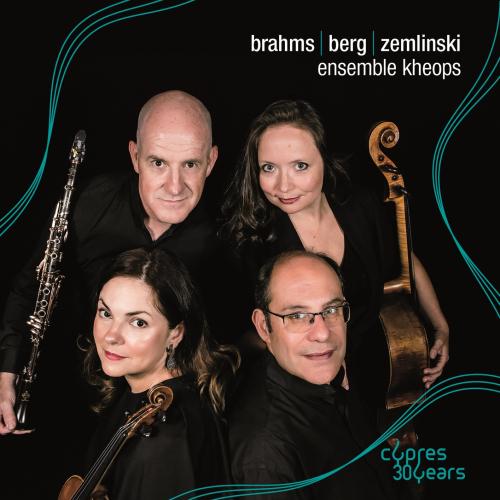
Brahms, Berg, Zemlinsky Ensemble Kheops
Album Info
Album Veröffentlichung:
2022
HRA-Veröffentlichung:
01.02.2022
Label: Cypres
Genre: Classical
Subgenre: Chamber Music
Interpret: Ensemble Kheops
Komponist: Alban Berg (1885-1935), Johannes Brahms (1833–1897), Alexander von Zemlinsky (1871-1942)
Das Album enthält Albumcover
- Johannes Brahms (1833 - 1897): Trio pour clarinette, violoncelle et piano en la mineur, Op. 114:
- 1 Brahms: Trio pour clarinette, violoncelle et piano en la mineur, Op. 114: I. Allegro 08:06
- 2 Brahms: Trio pour clarinette, violoncelle et piano en la mineur, Op. 114: II. Adagio 07:51
- 3 Brahms: Trio pour clarinette, violoncelle et piano en la mineur, Op. 114: III. Andantino grazioso 04:51
- 4 Brahms: Trio pour clarinette, violoncelle et piano en la mineur, Op. 114: IV. Finale. Allegro 05:05
- Alban Berg (1885 - 1935): Quatre pièces, Op. 5 pour clarinette et piano:
- 5 Berg: Quatre pièces, Op. 5 pour clarinette et piano: I. Maßig 01:33
- 6 Berg: Quatre pièces, Op. 5 pour clarinette et piano: II. Sehr langsam 02:16
- 7 Berg: Quatre pièces, Op. 5 pour clarinette et piano: III. Sehr rash 01:17
- 8 Berg: Quatre pièces, Op. 5 pour clarinette et piano: IV. Langsam 03:21
- 9 Berg: Kammerkonzert: Adagio (Arrangement par Alban Berg pour violon, clarinette et piano) 12:52
- Alexander von Zemlinsky (1871 - 1942): Trio pour clarinette, violoncelle et piano en ré mineur, Op. 3:
- 10 Zemlinsky: Trio pour clarinette, violoncelle et piano en ré mineur, Op. 3: I. Allegro ma non troppo 14:17
- 11 Zemlinsky: Trio pour clarinette, violoncelle et piano en ré mineur, Op. 3: II. Andante 08:46
- 12 Zemlinsky: Trio pour clarinette, violoncelle et piano en ré mineur, Op. 3: III. Allegro 05:48
Info zu Brahms, Berg, Zemlinsky
For it's second recording for Cypres, Kheops Ensemble immerses us in works that give pride of place to the clarinet, an instrument whose expressive possibilities fascinated the most original creators in the Habsburg capital at the turn of the 19th and 20th centuries. Brahms's Trio op. 114, dominated by autumnal colors, is an end-of-life work, imbued with a form of renunciation and resignation. The Four Pieces op. 5, dedicated to the master Schönnberg, exude a striking expressiveness, the kind of expressiveness that Berg has always managed to preserve in all his research. In his Trio op. 3, Zemlinsky, who makes no secret of his admiration for op. 114, develops an intense and tumultuous harmonic universe that marks the generational leap with Brahms. Kheops Ensemble, a variable-geometry group combining winds and strings under the sign of individual virtuosity at the service of the collective, radiates maturity and carries the colors of chamber music high in Belgium.
Ensemble Kheops
Ensemble Kheops
An ensemble built on solid foundations committed to enduring and evolving over time to bring music to its greatest heights…
The Kheops ensemble was founded in 2006 by internationally recognised musicians eager to unite their artistic affinities on high-calibre projects. It quickly rose to rank among the major ensembles of the music scene.
Kheops explores the countless paths and possibilities of chamber music, combining classical and contemporary works, occasionally including jazz and traditional music.
The ensemble has performed in various prestigious concert halls such as Bozar, Flagey, the Théâtre de la Ville in Paris, Süreyya Opera House in Istanbul, the Beethovenfest in Bonn, the Philharmonie Luxembourg, la Filature concert venue in Mulhouse, France, the Salle Philharmonique de Liège, as well as in China, Italy, the United Kingdom, and at the Festival des Forêts, the Festival de Wallonie, and the Flanders Festival, to name but a few.
Its recordings, devoted to Beethoven’s clarinet trios and the sextets by Dohnanyi and Penderecki (Fuga Libera), were received with critical acclaim by the trade press. The album ‘Fugitives', devoted to works by the ensemble’s pianist-composer, Muhiddin Dürrüoğlu, was released in late 2019 (Cyprès).
The Kheops ensemble collaborates with numerous artists such as sopranos Sophie Karthäuser (in the 4 Letzte Lieder de Strauss show) and Anne Cambier (Mr Croche), jazz musician Steve Houben (The Blue Path), and narrators Bruno Coppens (Mes Amis mots) and Maureen Dor (L’Apprenti Sorcier).
The ensemble is also behind the Musical Seasons at Seneffe (Saisons Musicales de Seneffe), a musical gathering that takes place four times per year at the magnificent estate of Seneffe Castle. The ensemble is supported by the Fédération Wallonie-Bruxelles.
The creation of the Kheops Ensemble is the culmination of more than 20 years of deep friendship and of a love of making music together.
It was founded in 2006 by three internationally recognized Belgian musicians: Marie Hallynck, cellist; Ronald Van Spaendonck, clarinettist; and Muhiddin Dürrüoglu, pianist and composer. Together with harpist Sophie Hallynck, they form the ‘central quartet’ of this ensemble, which can be augmented with a variable number and assortment of other musicians depending upon the piece being performed.
As far back as its first concert at Bozar in Brussels in 2007, the violinist Graf Mourja and horn player Hervé Joulain have joined with the ensemble in performing Penderecki’s sextet. Since then, the ensemble has quickly expanded thanks to the collaboration of viola player Lise Berthaud, bassoonist Laurent Lefèvre, violinist Ning Kam, trumpeter Romain Leleu and flautist Gaby Van Riet, to name just a few. All the members of the ensemble share a passion for chamber music and most of them have known each other for a long time. Listening to them, it seems clear that these musicians were made to perform together!
There are numerous common threads, musical and otherwise, connecting these musicians. For example, Marie and Ronald have both been voted ‘Rising Star’ by the ECHO network and have stolen the same spotlights in the most beautiful concert halls in Europe. Marie and Muhiddin, partners both on and off the stage, met during their studies at the Queen Elisabeth Music Chapel before going on to teach at the Conservatoire Royal de Musique in Brussels, where Ronald also teaches. Graf and Laurent are connected through their participation with the Juventus Association and its annual festival. Laurent introduced Ronald to Hervé while recording the complete works of Poulenc for the Naxos label. As for the Hallynck sisters, they have played together since early childhood, and continue to this day to play through the repertoire of chamber music works that include the harp. The two met the other members of the ensemble thanks to a number of happy coincidences during their musical tours when they discovered many shared musical proclivities.
Dieses Album enthält kein Booklet

